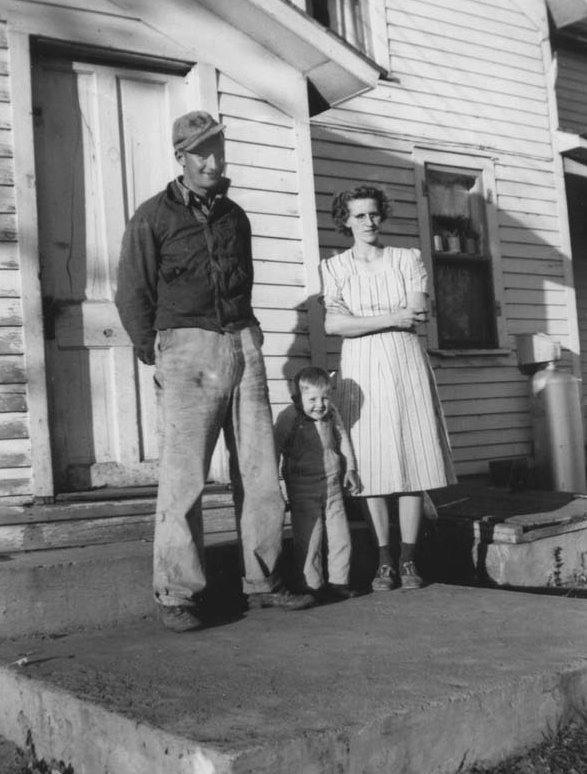
Columnist Arvid Huisman is shown with his parents at the backdoor of their rural Kossuth County home in 1950.
By Arvid Huisman
In the early 1980s a family vacation included a visit to Harold Warp’s Pioneer Village in Minden, Neb. This amazing museum included, among scores of other exhibits of early Americana, a series of kitchens from the past.
Though I was born nearly two decades later, it was the kitchen of 1930 that resonated most strongly with my memory. I was familiar with all the appliances, furniture, decor and cupboards.
This feeling of being out-of-order chronologically also happened in other areas of my life and I know why.
My mother was a first-generation American and one of 12 children who grew up in an impoverished immigrant home during the Great Depression. My father was a second-generation American whose family was more well-off financially but adhered to Old World values of thrift, conservatism and self-determination.
English was a second-language for both of my parents who learned English when they enrolled in country school. At home my parents regularly spoke Low German until we left the farm and moved into town when I was five-years-old.
My parents’ 1930s lifestyle was my lifestyle in the 1950s.
Some examples of our 1930s lifestyle in the early 1950s …
The automatic pop-up toaster was invented in 1920. Until later in the 1950s, however, we toasted our bread on an older two-slice “flip open” toaster which required manual reversing of the bread to toast both sides.
I remember helping my mother churn butter and fetching drinking water from the hand operated pump under the windmill. At four years of age I could carry only half a pail but I was proud I could help. We drank water from that pail from a dipper which was shared by the family and guests.
The water pail sat on a dry sink. Waste water drained into a five-gallon bucket under the dry sink. I recall my mother calling this the “slop bucket.”
TO READ THE ENTIRE STORY AND OTHER FASCINATING STORIES ABOUT IOWA HISTORY, subscribe to Iowa History Journal.
